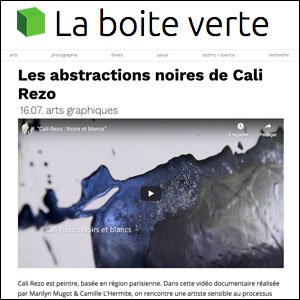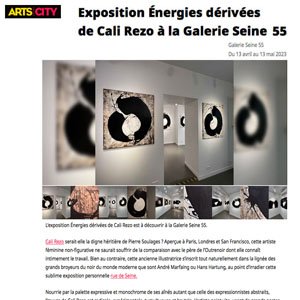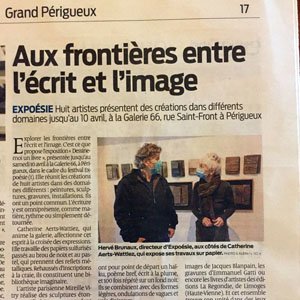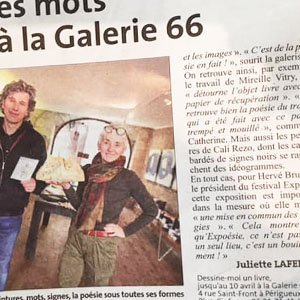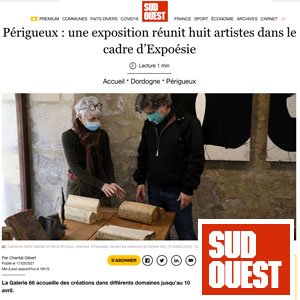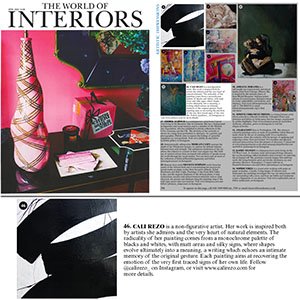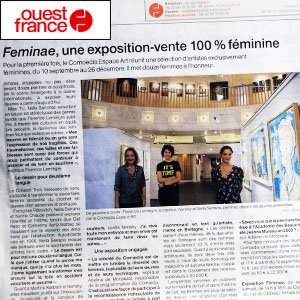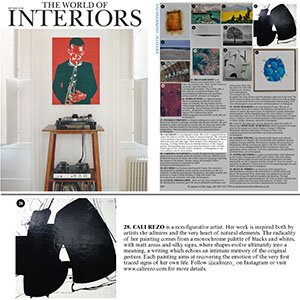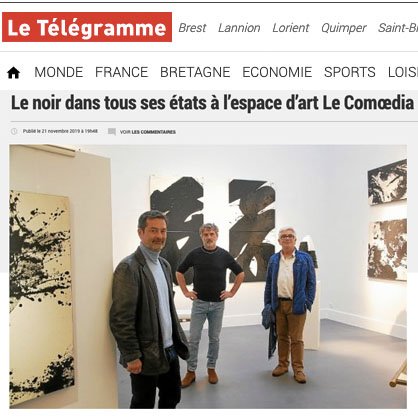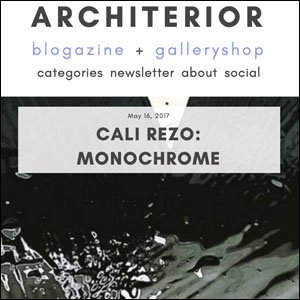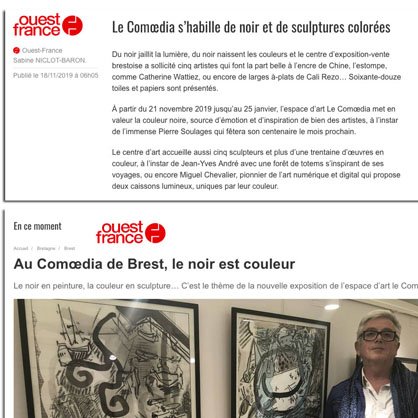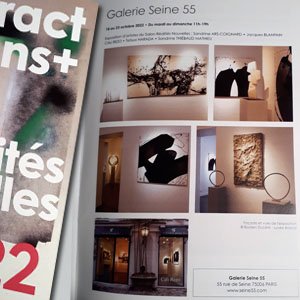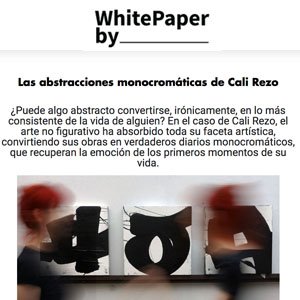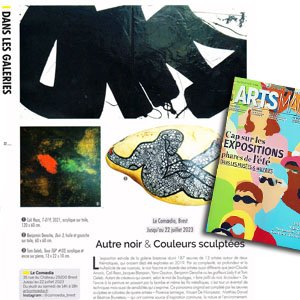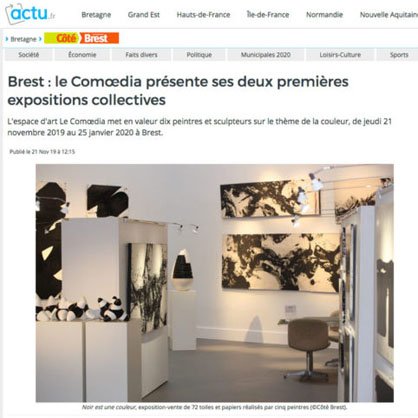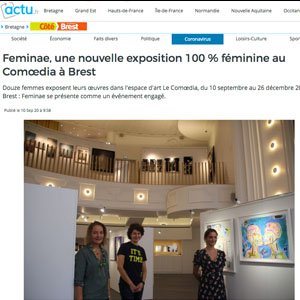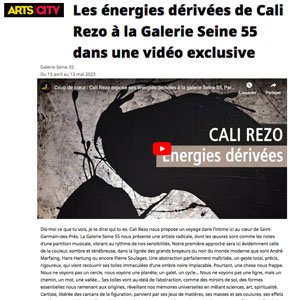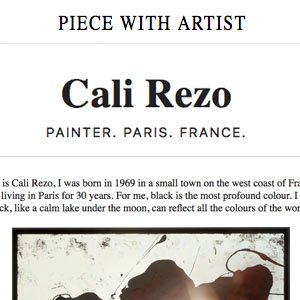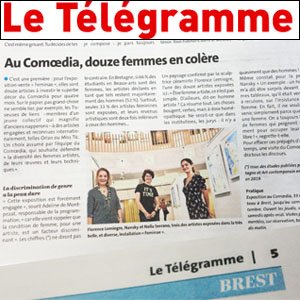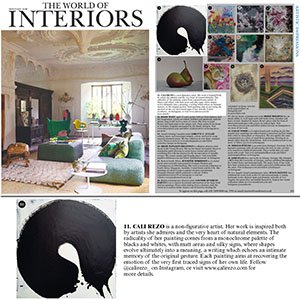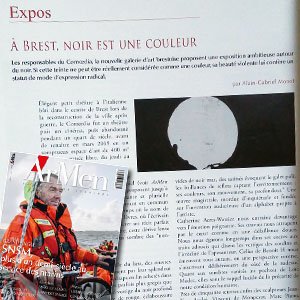Cali Rezo’s work stands in a demanding lineage: that of Western gestural abstraction and the avant-garde Japanese calligraphies. Her canvases, worked in black and white, unfold an intense dialogue where mass and void, shadow and light, find a fragile and fertile balance.
The monumentality of the forms summons the memory of Franz Kline¹, whose condensed energy she shares, yet Cali Rezo shifts that fulgurance toward a more interior temporality. Her gesture is not only explosion: it is inscription, persistence, resonance. Like the artists of the Bokujinkai group², who, in Japan, transformed calligraphy into a space of creative freedom, she explores the sign as a writing both universal and intimate, freed from language but still nourished by a deep memory.
Her trajectory shines light on this tension between spontaneity and structure: years of practice in printed image, of studying paper, typography and engraving, surface in each composition. The support is never neutral; it retains the trace of this relation to matter, to balance, to the organization of void and fullness.
Her works refuse immediacy. They demand a prolonged experience, where the eye lets itself be absorbed by the black masses, explores the luminous fractures, and discovers in the apparent silence the echo of a primordial gesture. These are not canvases to be "seen", but spaces to be inhabited, where the pictorial sign becomes breath, memory, and respiration.
(Translation: Mina Pêcheux)
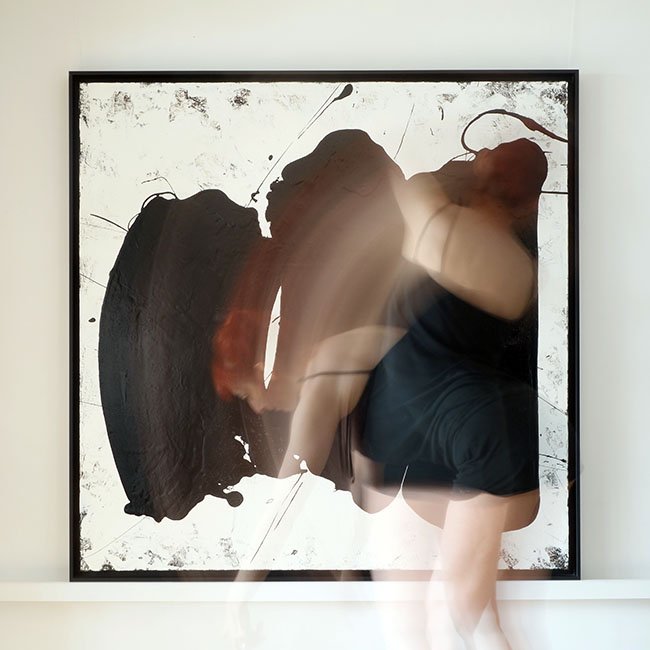
Selected exhibits
Press
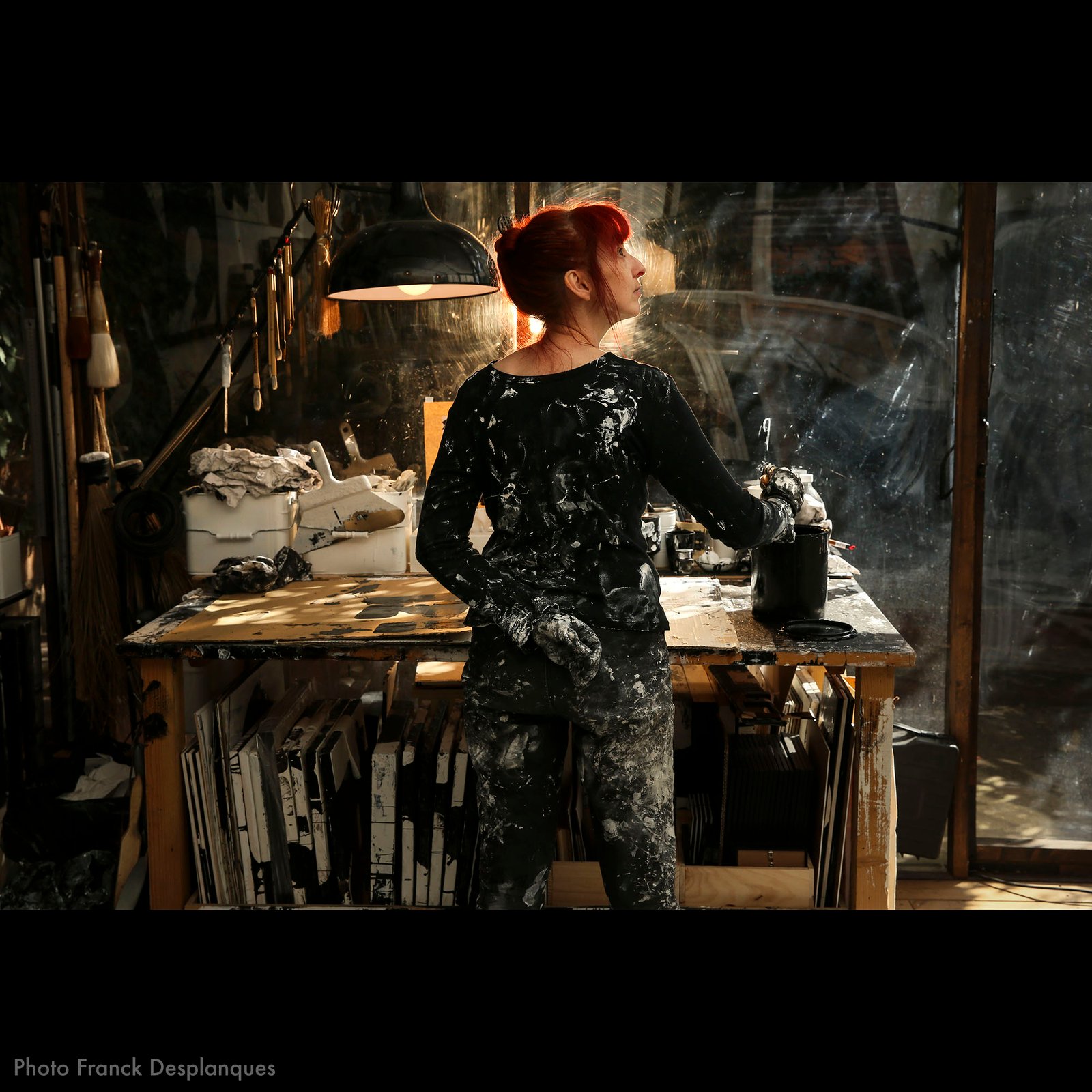
Paintings
• What art supplies do you use to paint?
I mostly work on linen canvases stretched on frames. I use acrylic for the background and oil for the shapes. For small sizes, I also play around with paper, cardboard, board or ceramics.
I buy my supplies in the artists' shop "Marin" (Paris, France). I also make some of my tools and brushes.
• How much do you sell your paintings?
The price depends on the size and the medium.
Check out the catalogue to see the available paintings.
Feel free to send me an email if you want more details!
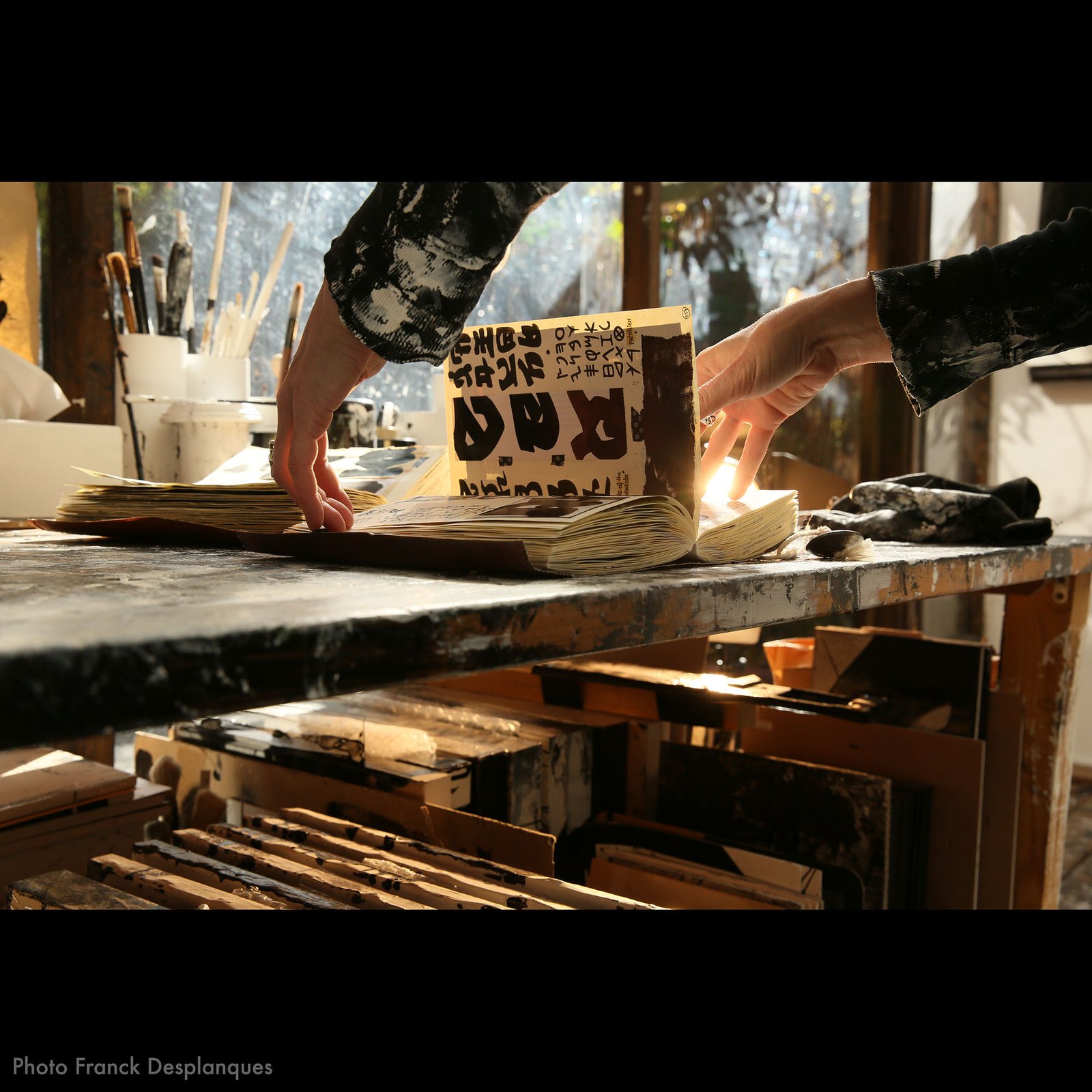
Sketchbooks (see some videos...)
• What supplies do you use for your calligraphies?
I draw with Chinese ink and calligraphy brushes on paper or various sketchbooks, and with felts.
• Are the calligraphies Chinese characters?
Although they are inspired by asian ideograms (that are chinese, japanese, koreans, tibetans...), my calligraphies are most of the time asemic.
It depends on its thickness and how inspired I am, I would say between 1 and 5 months.
• Do you sell your sketchbooks?
Not for now: those are research notebooks that gather my inspirations and are the foundations of my work.
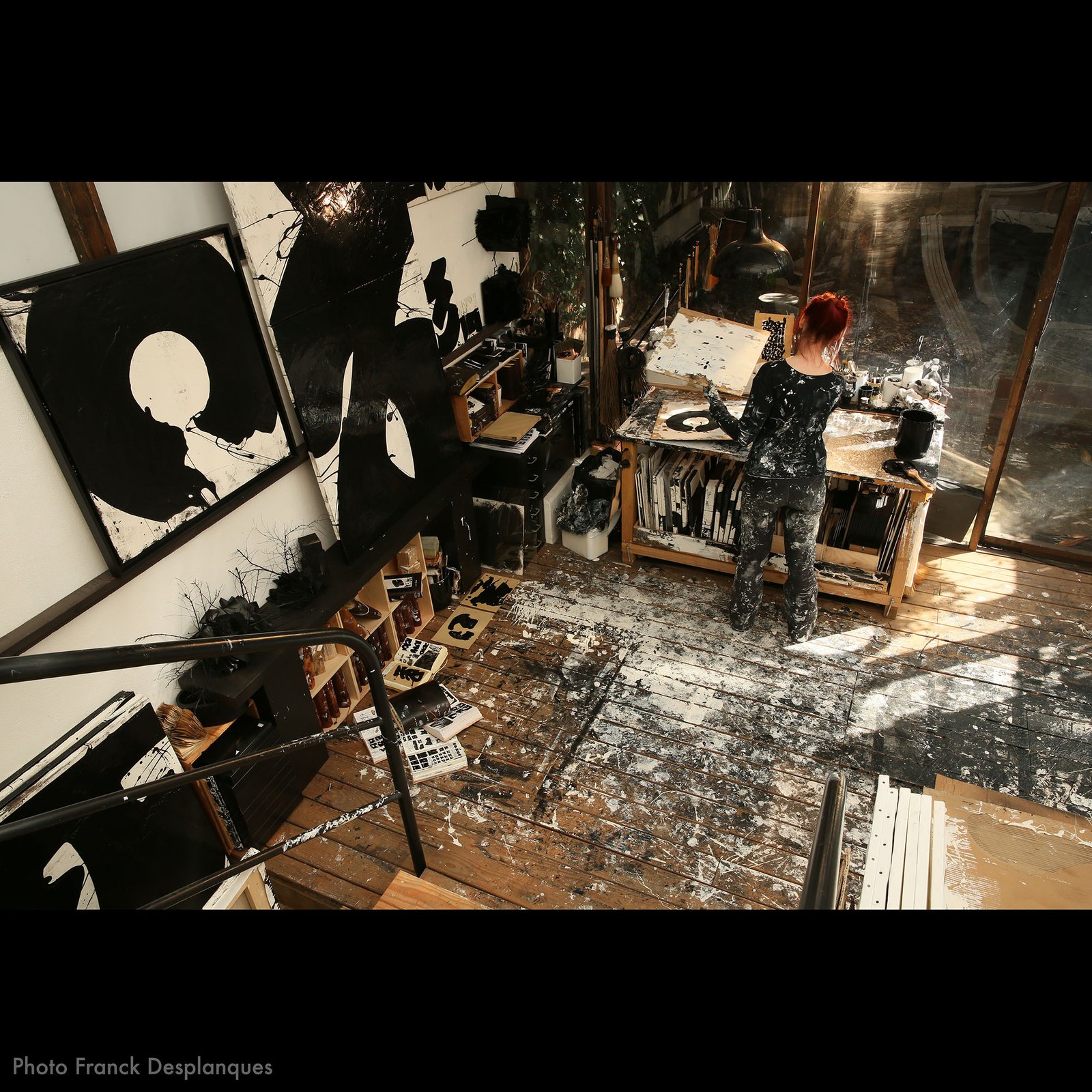
The Studio
• Can we come and visit your Studio?
With pleasure, I meet with clients regularly! The Studio is located near Paris (13th district), 10 minutes walk away from the subway. If you wish to make an appointment, send me an email.
Photos: Franck Desplanques
